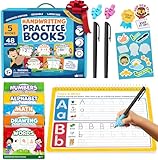Writing Assistive Technology for Children with Dysgraphia
Writing Assistive Technology can help your child SUCCEED with composition writing.
Does your child struggle with writing and spelling in spite of educational help?
Have you reached a point where continuing to work on basic writing skills seems fruitless?
Guess what? There’s HOPE with Writing Assistive Technology!
Providing your child with writing assistive technology will help your child create great written compositions. His responses match his thought levels because Writing Assistive Technology can encourage your child to write more.
Writing Assistive Technology is a great way to let your learning abled child work at grade level in science, social studies, and language arts when he’s not specifically working on developing his writing skills as a separate instructional area.
Let me share some of the Writing Assistive Technology tools we have used. One of my favorite products for spelling correction is Ginger’s writing solution. Ginger is spelling and grammar checking software. Having Ginger is like having an interpreter for dyslexia-speak built into a word processor. There are very few phonetic spellings my son creates which Ginger cannot adequately interpret.
Another great tool is Speech-To-Text software. A lot of PC’s have this built-in capability. You have to have a built-in microphone, headset, or separate microphone to utilize this writing assistive technology. The biggest trick is finding the software on your computer and activating it. You can usually find this software somewhere under the configuration options for the display on your PC. The speech-to-text function is usually provided as an “accessibility” feature. You will need to check with your specific PC manufacturer to find the exact location.
You can always purchase Speech-To-Text software too. We use Dragon Naturally Speaking dictation software. This software has been on the market a long time, and probably does the best possible job of translating spoken text into written text. Dragon Naturally Speaking dictation software, like all speech-to-text software, requires ‘training’ time. In order to function properly, the software has to be used by the dictator (your child). Then misspellings have to be corrected manually for a short period of time before the program will consistently type out whatever your child dictates. It takes a little time and patience to get the software properly set.
Unfortunately, person who will be using the software has to do the training. That means it can be a frustrating experience for your child. I think it is easier for teens to be reasoned with regarding the temporary frustration in training the software. However, once the software has been trained to recognize your child’s speech, it is a great writing assistive technology tool!!
These two writing assistive technology tools are both used in conjunction with a good word-processor. WordPerfect and Microsoft Word are probably the two most popular word processors. Either of the writing assistive technology tools above can be used with either word processor.
If you happen to have an Apple computer, you can get Microsoft Word for Apple computers or use their Pages word processing software.
With either type of computer, you can use Open Office or Google Docs as word processing options. Using those with built-in speech to text functions will enable your child to express themselves without physically handwriting everything.
Personally, I have a small, 13-inch laptop computer. It is a really easy size to manage for kids. I use mine as my own writing assistive technology!
If you need additional information and curricula for helping your child overcome his dysgraphia, check out Two Great Writing Programs for Homeschooling a Child with a Written Expression Learning Disability (Dysgraphia) and Curricula for Homeschooing and Teaching Handwriting to a Child with Dysgraphia.







